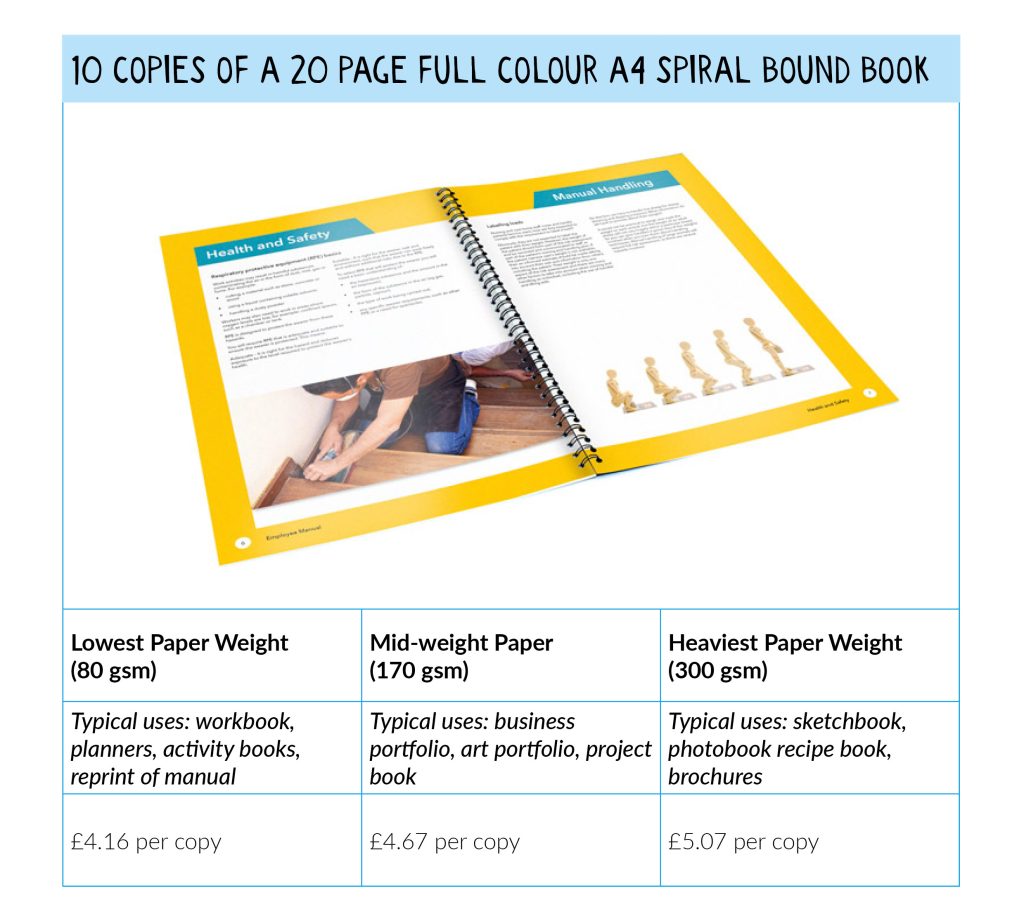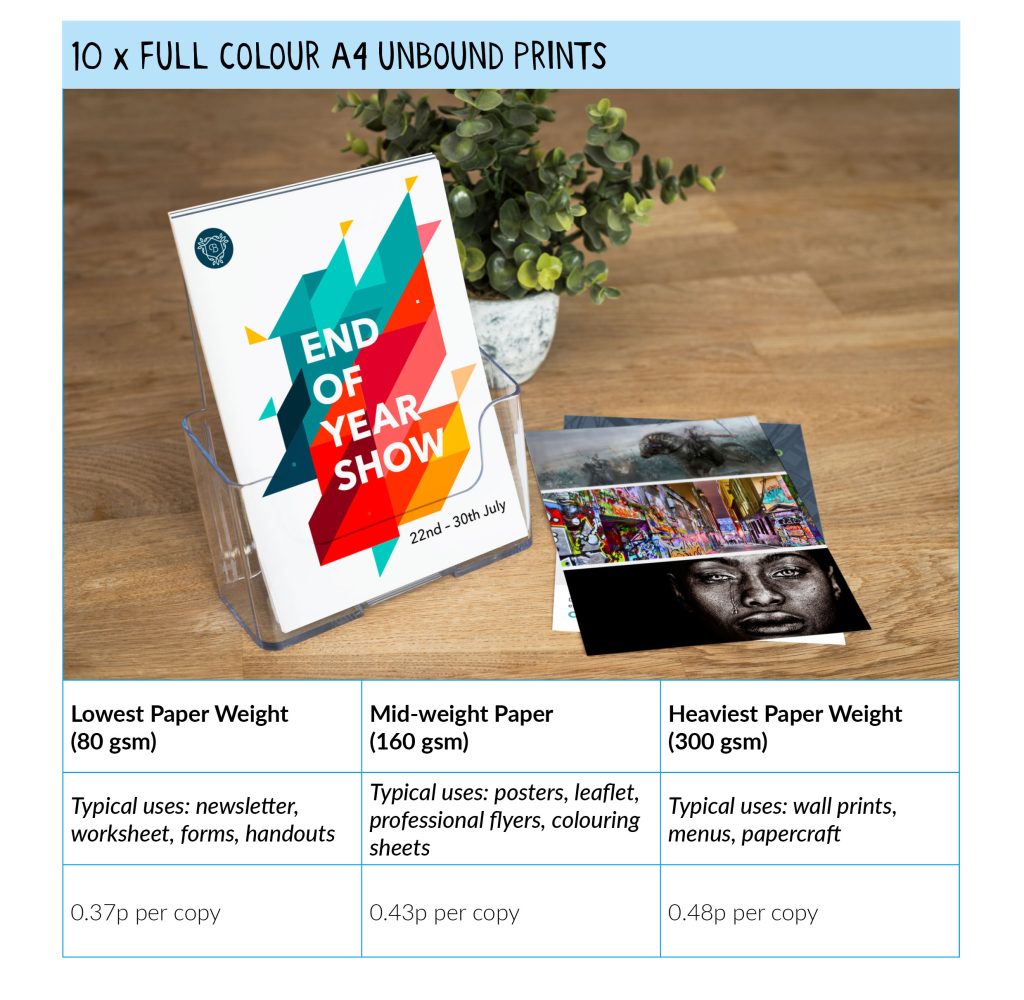Which paper should you choose for your documents?
Posted in News on 17 July 2025
Choosing the right paper weight for your printed materials is essential – not just for aesthetics, but also for functionality and professionalism. Whether you’re designing a flyer, printing a book, or producing a booklet, the type and weight of paper you use will greatly influence the final product’s look, feel, and durability.
But if you’re on a budget and think you have to choose a lower quality paper to save money, we might just be able to convince you otherwise!
This table shows that you can upgrade your paper weight significantly for just a few pence extra per copy:


What are the most suitable paper weights for common print formats?
Here’s a quick comparison of common weights:
Internationally, and increasingly in professional settings, paper is measured in GSM (grams per square metre). The higher the GSM, the thicker and sturdier the paper.
-
70-90 gsm – Thin, standard printer/copier paper
-
100-120 gsm – Thicker text paper, suitable for internal documents
-
130-170 gsm – Lightweight card, great for flyers
-
200-250 gsm – Heavier stock, ideal for covers and premium flyers
-
300+ gsm – Cardstock, used for postcards, business cards, or book covers
Best Paper Weight for Flyers
Recommended: 130-170 gsm
Flyers are usually handed out, pinned up, or left on counters, so they need to be sturdy enough to hold up to handling without being too rigid. A 130-170 gsm glossy or matte paper gives your flyer a quality feel while remaining affordable and easy to distribute.
-
For budget flyers: Use 100-120 gsm.
-
For professional or promotional flyers: Go for 150-170 gsm with a satin or gloss finish.
Best Paper Weight for Booklets
Recommended: 100-170 GSM for inner pages, 200-250 GSM for covers
Booklets such as event programmes, product catalogs, or training manuals typically use two different weights:
-
Inner pages should be flexible enough to flip through comfortably. A 100-130 gsm paper works well for this.
-
Covers should be heavier to add structure and protect the inner pages. A 200-250 gsm cover stock gives a nice, durable finish.
If your booklet is stapled (saddle-stitched), using too thick a paper can make folding difficult, so stick with lower weights for booklets under 40 pages.
Best Paper Weight for Books
Recommended: 80-120 gsm for pages, 240-300 gsm for covers (paperbacks)
For most books, especially novels or non-fiction paperbacks:
-
Inner pages are usually printed on 80-100 gsm uncoated or matte-coated paper. This prevents show-through and gives a pleasant reading experience.
-
Colour books (like photobooks or children’s books) may use 120 gsm or more for vibrancy and durability.
-
Covers for paperback books are typically 240–300 gsm, often with a laminated coating for protection.
Hardcover books use different binding and materials, but their inner pages generally follow the same gsm guidelines.
To conclude
In conclusion, choosing the best paper weight for your budget is a smart investment in the quality and impact of your document. Aim for the highest quality you can afford; your audience will notice the difference!